There has been a lot of talk lately about finishing solid wood with oil, about natural and environmentally friendly oils that can be used to finish food bowls or children's toys. But there are several kinds of oils, and most confusingly, there are several kinds within the same grade. Perhaps the most confusing of all is Danish oil. You would expect under this name to find a clearly defined product with a certain composition or drying time. In fact, Danish oil is a general name given to a class of products that give a matt, natural look and are made from mixtures of oils, paints, additives and solvents.
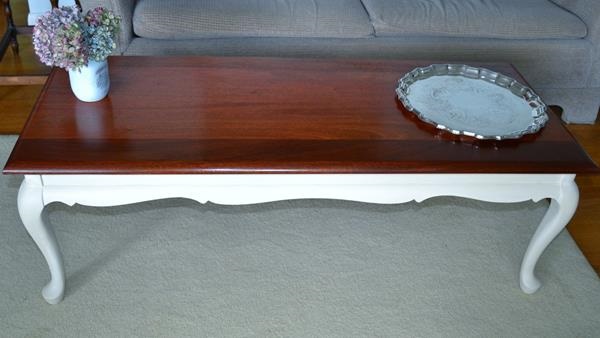
Danish oil - natural matt finish
The name Danish oil originated in the second half of the last century, when Danish furniture was exported around the world on a massive scale. The oil was used to give Danish furniture its matt, natural look. The first Danish oil recipes contained tung oil and linseed oil in different proportions.
Tung oil is a very expensive product in its pure state, and to make it more affordable, it started to be mixed with solvents. This led to a variety of flavors to suit everyone's budget. Different colors of tung oil were produced to meet different requirements, with different drying times. Depending on the manufacturer, product body (dry residue) varies between 10 and 50%, with 50% being considered the best.
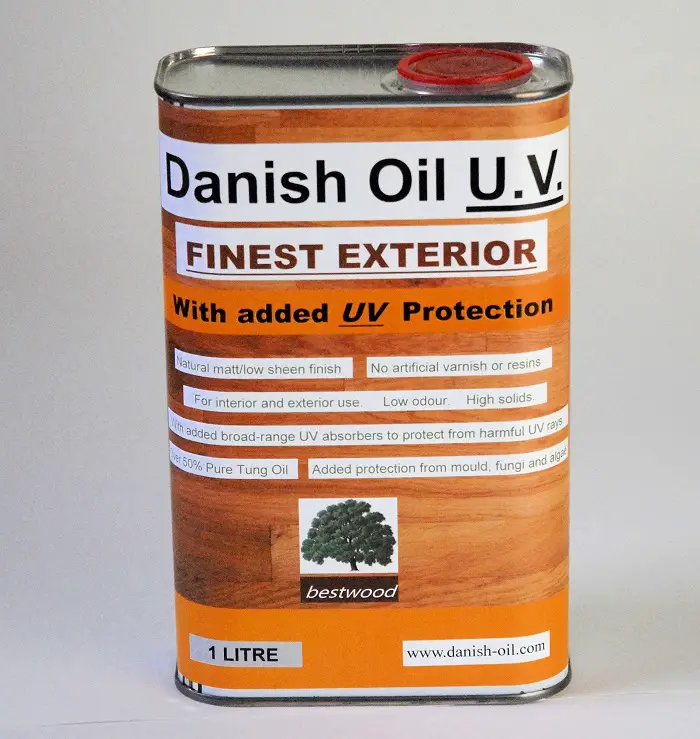
The blends that make up a Danish oil no longer contain only oils, but also resins, additives, pigments and solvents. For example, Danish oil UV has been developed, which has UV absorbers in its composition, so the product can be used outdoors without any problems. Pure oils, both tung and linseed, can be used outdoors without any problems. Tung oil is even very resistant, its color remains unchanged over time (linseed oil darkens over time). Reducing the oil content and adding other materials decreases outdoor resistance, so it is necessary to add auxiliary materials that increase resistance. OK, OK, you'll say, but why don't we just leave the oil as it was in the beginning and get rid of all the problems. Yes, that would be very good, but such a product is very expensive. There are many who want the product to be perfect, but few who are willing to pay for it.
No matter the manufacturer, Danish oil is a very suitable product for finishing solid wood. The main advantages of using it are:
- easy to apply with brush or cloth
- gives a natural look with a silky sheen
- is formulated to penetrate as deeply as possible into the wood for maximum protection
- gives very good moisture resistance, and this resistance increases as the oil penetrates deeper into the wood
- provides resistance to soiling
- does not form a film, so there is no risk of cracking or peeling
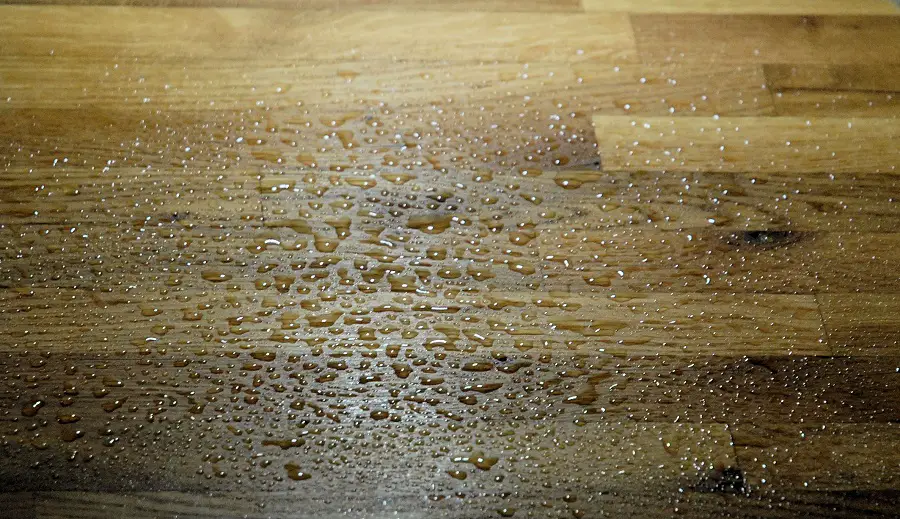
In general, no further protection is applied over oiled products. Although they have good moisture resistance, mechanical shock resistance is low. Objects finished with Danish oil can be scratched, and dents leave marks. However, there are also Danish oil products over which varnishes can be applied. This is the case with Danish oil Stain. It behaves like a stain that enhances the natural design of the wood very well, over which one-component nitrocellulose or polyurethane varnishes can be applied. Finishing with Danish oil stain and nitrocellulose varnish is one of the finishing methods for electric guitars.

Danish oil colors are also used to give wood an old, aged look. It looks perfect on wood that has or is showing signs of ageing (find detailed information in The hard signs of wood antiquingMedium and dark shades of walnut are mostly used.
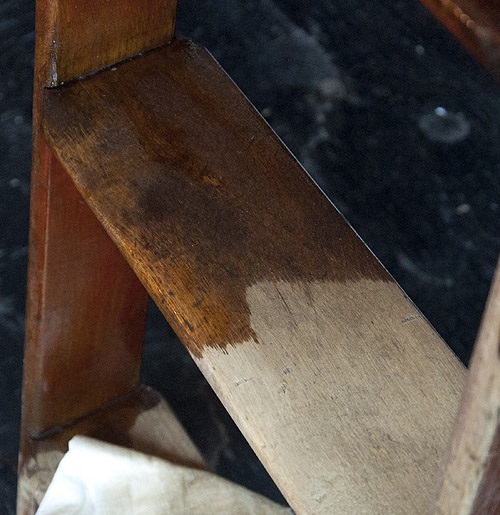
Even though it's called an oil and is based on a mixture of oils, if you're refinishing baby cribs or toys, be careful about its composition.
If you want to use Danish oil to finish baby toys or cribs, it's a good idea to research before you buy. Don't assume that it's oil, so it's natural and can't cause problems. There are many brands and each has its own recipe. There are products where the tung oil content is as high as 40-50%, but also products where it is no more than 5-10%. In addition, the solvents used can be a problem.
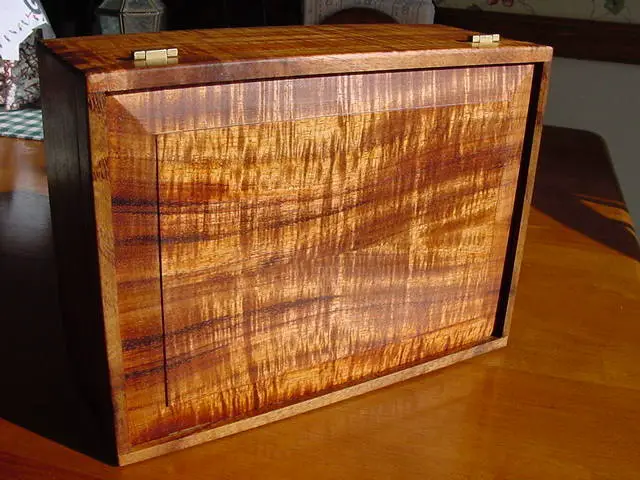
Using Danish oil in DIY projects
If you've decided to use Danish oil for a diy project, after you apply it, wash your rags and brushes thoroughly before throwing them away, or put them in a container of water. One of the solvents used to make the oil is white spirit, and this has the phenomenon of self-combustion. The phenomenon occurs especially in summer when temperatures are high. This is actually the big problem with oils. To penetrate as deeply as possible into the wood, they are diluted with solvents. The most suitable is white spirit or similar products obtained by distillation of petroleum. The problem is that all these products burn themselves. To avoid problems, put rags and brushes in pots of water and do not use sponges.
For the best finish, 2-3 coats of Danish oil are recommended. The next coat is applied after the first one has dried. Drying of the oil takes 4-8 hours, depending on the manufacturer. Many recommend, however, leaving it for up to two days for oxidation to be complete.
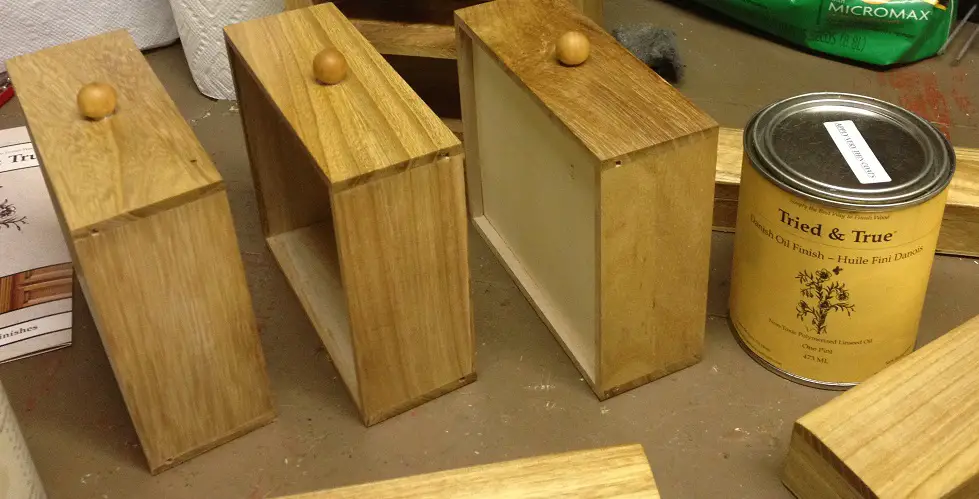
Danish oil can be found in DIY stores and online stores. Using it to finish solid wood is a very good choice because it really brings out the wood's design. Before application, the wood should be sanded and prepared very well, because the oil highlights not only the beautiful parts, but also the defects.
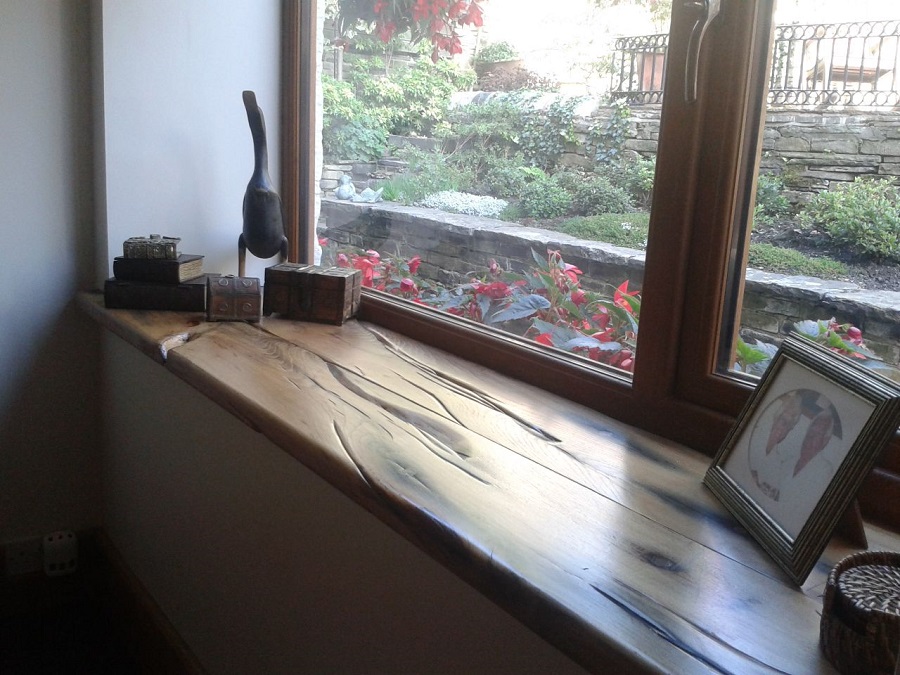




































Where can you buy Danish Oil in Romania?
Hello! Is there any adverse reaction if I apply a coat of varnish over the Danish oil?
Hello.
Over Danish Oil you can apply water-based varnish or varnishes thinnable with white spirit (petroleum thinners) or oil-based paints.
But why do you have to cover it up? Danish Oil can be used as a top coat without any problems. It has a pleasant appearance and leaves the wood looking very natural, without any film or sheen.
All the best!
Don't forget to subscribe to the printed Wood Magazine! For only 58 lei/year you can find out news in the field, discover craft ideas or trade secrets. We remind you that the content in the printed magazine is different from the one on the website. Details in the link below.
Thank you!https://revistadinlemn.ro/product/abonament-revista-din-lemn/
Hello! I wanted to apply a coat or two of varnish over the table top thinking of scratching hot mugs etc. What do you think?
Good evening!
With varnish it has indeed higher mechanical and scratch resistance. But if it is not a heavily used table and the wood is hard, it resists very well with oil. In the past tables were treated only with oil. And now there are manufacturers who recommend only oil-finished tables.
All the best!
Hello! I want to order Danish Oil Exterior. May I?
Good evening!
I have two veneered doors, one for the bathroom and one for the kitchen. I have cleaned their bath because they were too deep in colour and now I want to apply oil. I was thinking Danish Oil or Tung Oil, possibly apply wax over it too. On the bathroom door I would like to paint some geometric figures (grey/white/black). Is this possible if I use Danish Oil or Tung Oil? What paint should I use for those figures and what would be the order of application? (before/after oil coat)
Thank you!
Sincerely,
Bogdan Budai
Hello.
I'm thinking it would be good to oil the doors first and then make the design with oil-based or alkyd paints, so it will stick to the oil. Let the oil dry well before you do the drawings. Once they have dried, apply wax. It will fix the drawing and protect the whole surface.
All the best!
Don't forget to subscribe to the printed Wood Magazine! For only 58 lei/year you can find out news in the field, discover craft ideas or trade secrets. We remind you that the content in the printed magazine is different from the one on the website. Details in the link below.
Thank you!https://revistadinlemn.ro/product/abonament-revista-din-lemn/
Hello!
On finetools.co.uk, a litre of Danish oil is only slightly cheaper than a litre of tung oil. So why choose Danish oil?
Thank you in advance!
Good evening.
Danish oil is a blend of tung oil and linseed oil. Linseed oil has a smaller molecule and penetrates deeper into the wood ensuring good moisture protection over time. The condition is that it is a quality Danish Oil. There are now many companies selling oil blends under this name.
All the best!
Don't forget to subscribe to the printed Wood Magazine! For only 58 lei/year you can find out news in the field, discover craft ideas or trade secrets. We remind you that the content in the printed magazine is different from the one on the website. Details in the link below.
Thank you!
https://revistadinlemn.ro/product/abonament-revista-din-lemn/
I want to apply a finish on a walnut countertop. The countertop will be used in the bathroom (2 sinks are mounted on it). I like the natural look of the wood and was thinking of oil or Danish oil but don't know if it is suitable for the bathroom. What would you recommend as an ideal finish for walnut used in the bathroom? - Both for the countertop and for small (bathroom) furniture. If possible, could you recommend a specific product/brand. When I choose I go for quality and durability in 1st place and price in 2nd place.
Thank you.
Hello.
Oil is now less used for wooden furniture that sits in aggressive environments such as bathrooms and kitchens. Such a finish is resistant to moisture, but less resistant to aggressive and abrasive cleaning products. In the past, however, it was widely used, so if you protect and refinish the finish from time to time, it's no problem.
The most beautiful is tung oil and it looks sensational on walnut. Danish oil is a mixture of tung oil and linseed oil (mainly). The more tung oil the better.
Tung oil from Borma Wachs is of very high quality. Danish oil is available from several companies (Watco, Rustins, Dulux). It is important to check the tung oil content.
All the best!
Hello,
thank you for your answer. I will go on your recommendation.
Can you tell me if for the first coat it would be recommended to dilute it with turpentine 1:1 and then the next coats to apply undiluted or not?
Thank you.
Hello.
Yes, it's a good idea. That way it will get into the wood better and the water protection will be better.
Good luck!
Good morning, instead of turpentine can you use a Kober universal thinner for example?
Hello!
Instead of turpentine you can use white spirit (gas, petrosine) or another petroleum derivative. Universal thinners can be used if there are synthetic waxes in the composition. You can do a test by mixing a small amount of oil with the thinner. If not compatible it separates immediately, it "cheeses".
All the best!
Unfortunately, to the first coat of linseed oil I only added 10% petrosin.
Am I wrong to dilute the second coat 1:1 to make sure it penetrates deeper into the wood? (as with 10% I don't know what great thing I solved)
And then the 3rd and 4th coat I finish with Danish oil? (there are some beech tables that will sit outside)
You can dilute the second layer more. Linseed oil doesn't harden, it doesn't dry out, so the thinned layer will be able to soften the first layer and thus penetrate deeper into the wood. But because it doesn't dry out, you don't want to leave excess oil un-dried, unabsorbed by the wood. In contact with air it will become sticky.
Afterwards you can apply Danish oil. Use a product that says it is for outdoors. There are many products under the name Danish oil on the market, but there are very few 100% from natural oils. It is good to make sure that the product will also resist UV radiation.
I also want to mention that you have to protect the wood very well because beech is not a resistant wood outside. And outside, the tables should be placed in a more protected place, under an awning, so that they are as protected as possible from water.
https://revistadinlemn.ro/2019/06/12/cele-mai-rezistente-specii-de-lemn-la-exterior/
https://revistadinlemn.ro/2017/10/02/fagul-lemnul-discret-care-se-curbeaza-cel-mai-bine/
Thanks for your answers.
Another question I have, if I give at least 5 coats of danish oil mixed with petrosin, will it penetrate more into the wood compared to the same mixture but given once or twice?
And how do we know that the wood has absorbed the necessary quantity of oil to make it as resistant as it should be? I for example applied at least 5 coats of danish oil diluted with petrosin and after about 3 or 4 coats of normal oil, and now the final result looks as if I had applied varnish.
And on the last 2 hands I even rubbed with wet 500 grit paper to get the oil in even better. I don't understand how sandpaper does this, I think it opens the pores of the wood even more?
The deeper the oil goes into the wood, the better it will protect it. The idea is to apply 1-2 coats of diluted oil to penetrate the wood. Apply in excess and leave for 30-45 min. If the wood has absorbed everything, apply another coat after a drying time of 24 hours. Diluted coats can be applied as long as the wood absorbs. When saturated apply 1, max 2 coats of undiluted oil. Danish oil contains tung oil which makes a film. The more you apply the more the film will increase and look unnatural.
Sanding paper comes in many varieties and has different purposes. A paper with a grain size up to 220 opens the wood grain for absorption. Over 400, it polishes. For the first coats, use the one that opens the pores and thus increases the amount absorbed.
Thanks so much for the answers, they helped me a lot!!!
Glad I could help.
To finish any wooden body use 120 grit paper, then vacuum the wooden surface, make sure the wood is not wet, apply 3 coats of Danish oil, this in 4-6 hours at a temperature above 15 degrees danish oil is absorbed and the wood is dried quickly, before applying the varnish with hardener, clean the wooden surface again with an abrasive sponge, then vacuum again before applying the varnish, for a better resistance depending on the quality of the varnish, repeat the last operation once more ! Make sure that you use a brush and a roller free of impurities and that no other mechanical or manual sanding operations are carried out in the area, in case of contract you have to repeat the operation ! For exterior wood always apply 3 coats of Danish oil, then 1 coat every year ! Danish oil is one of the most recommended protective oils in the UK..where humidity is very high ! Too bad it's hard to find in our country ! Have a good LIFE !
Hi,
I would like to paint a hammock, and after some research, I came to the conclusion that it would be appropriate to use oil.
Can you please help me with some specific recommendations?
I would like to change the color of the wood from a brownish to a shade of orange.
Would it be appropriate to use colourless oil and then varnish to give the desired colour?
https://www.whamaku.pl/en/set-alicante-swing-chair-single-2-p2713
Hello!
Yes, oil is a good choice. You can colour it with pigments to achieve the desired colour, the oil remains transparent and the wood grain visible.
If the hammock is the one in the link it will be a bit harder if it is bought soon. The wood has been immersion stained which means it has absorbed a lot of oil. To make it absorb more you should sand it before with 150 or 180 grit sandpaper and after drying (24 hours), sand with fine paper (280 or 320) and apply another coat.
As the hammock sits outside in the rain, the oil is "washed out" and over time you may even need to refresh the protection. It may be better to wait a few months before changing the color.
More information about oil and its application can be found in the links below.
All the best!
https://revistadinlemn.ro/2019/04/17/7-reguli-de-respectat-la-finisarea-cu-ulei-a-lemnului/
https://revistadinlemn.ro/2016/11/01/uleiuri-naturale-pentru-finisarea-lemnului/
https://revistadinlemn.ro/2018/05/15/ulei-de-in-cand-unde-si-cum-se-foloseste-cum-sa-ti-faci-singur-vopsele-de-ulei/
Hello,
I'd like to protect the wood on the patio and deck (rafters, wainscoting, stiles, finials, feathers) where the wood is mostly protected from rain and UV rays (there are a few stiles on the deck and a "water" on the patio that would be more exposed).
I would like to protect with a solution that would last as long as possible, ideally 10+ years, without having to apply another coat.
That, and, because I have the sagebrush at 5-6m high (it's a relatively large area of sagebrush, about 100sqm), the labor requiring significant effort/price.
Would it be better to use Danish Oil instead of linseed oil?
When it should be reapplied (after several years), should it be sanded before or can it be applied directly?
Is there a difference in the application procedure of Danish Oil compared to flax oil?
Thank you.
Hello!
Danish oil is more resistant than linseed oil. It's a mixture of linseed oil and tung oil, and the tung oil makes a film, unlike linseed oil. There are several types of Danish oil, depending on the manufacturer. The better the product, the more tung oil it contains.
No sanding is needed to apply another coat after a few years. The dry appearance of the wood, without the typical wood sheen, is the signal to apply another coat.
Application is similar to linseed oil.
The oil on the market with the highest resistance over time - according to the manufacturer - is the one from Bochemit, over 15 years. But we're talking about a synthetic oil based on petroleum compounds.
Good luck!
Thank you very much for the prompt response!
Yes, I'm thinking of buying a Danish Oil (Decking Oil HD - Danish Oil, actually) from Borma Wachs, which I'll give in 2 coats, and which I hope will last as long as possible where the wood is protected from rain and UV.